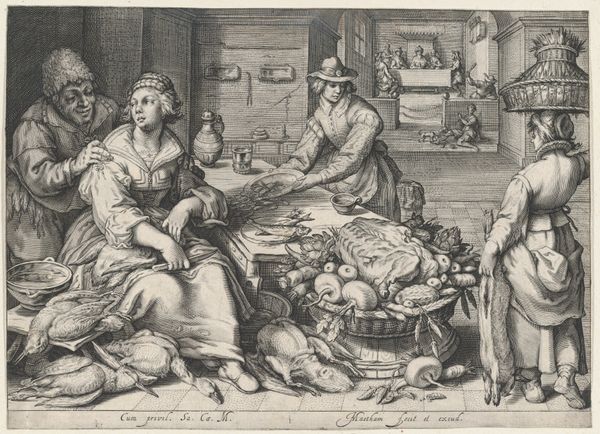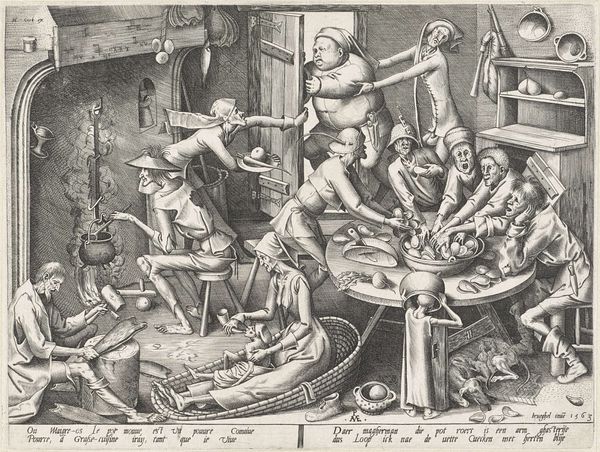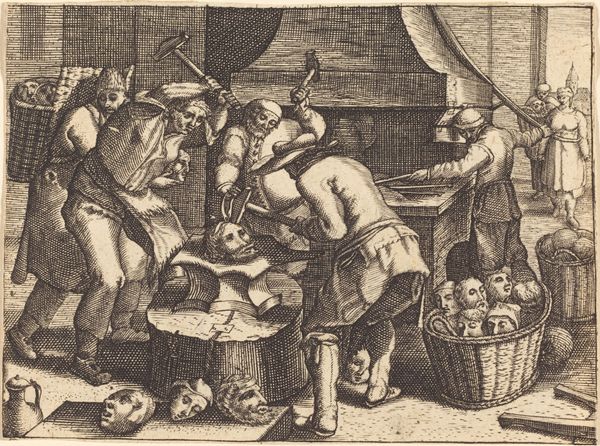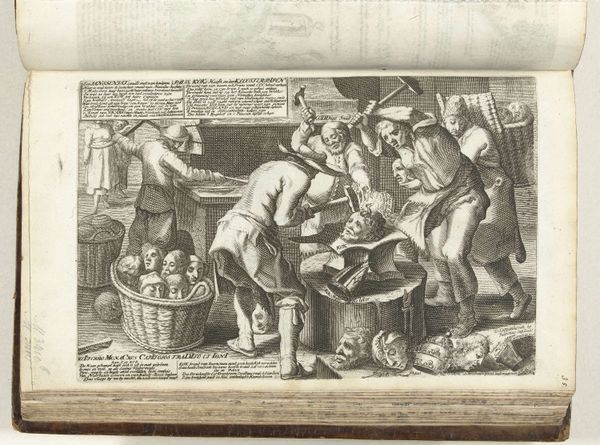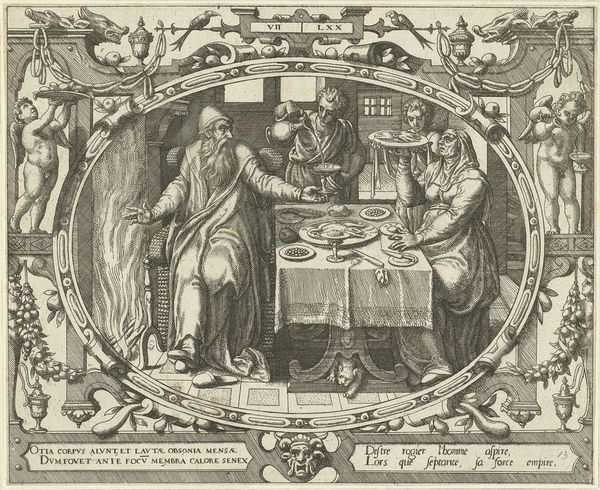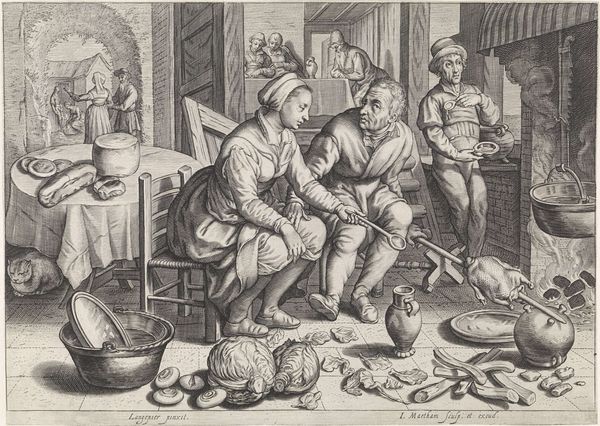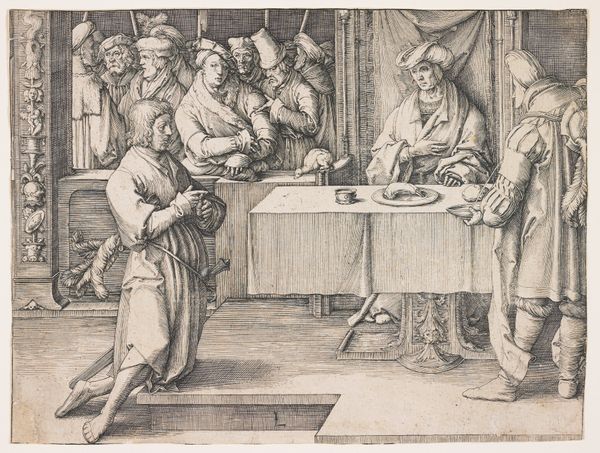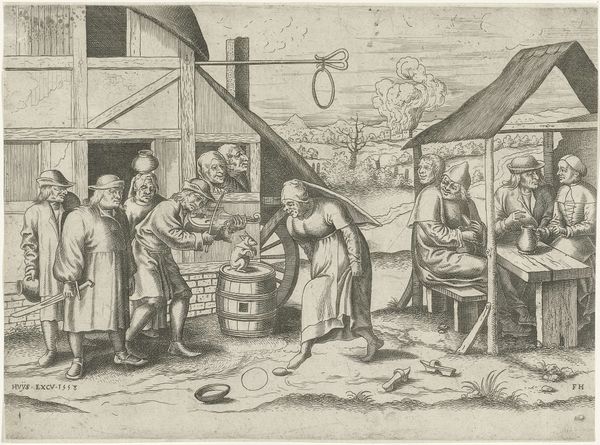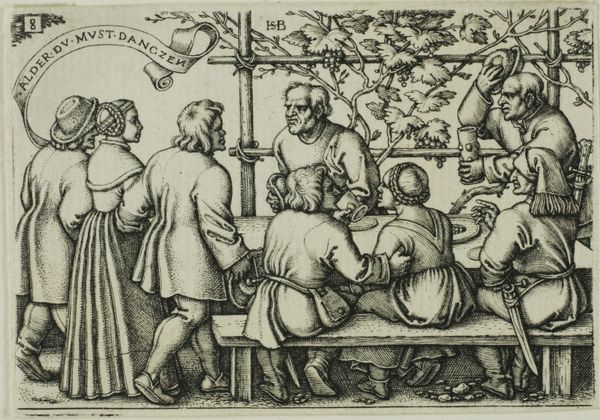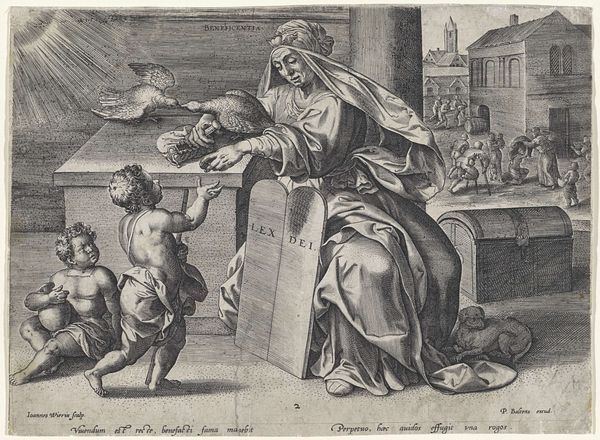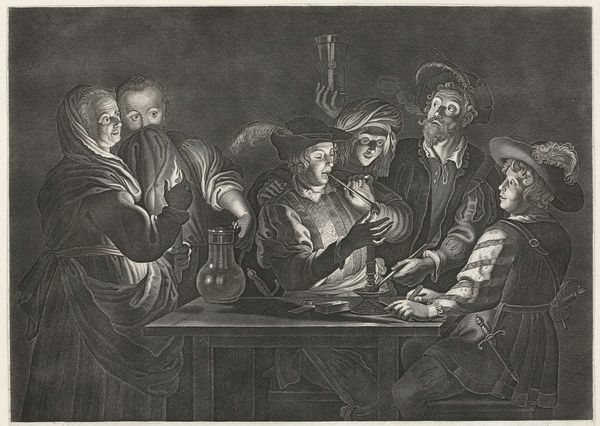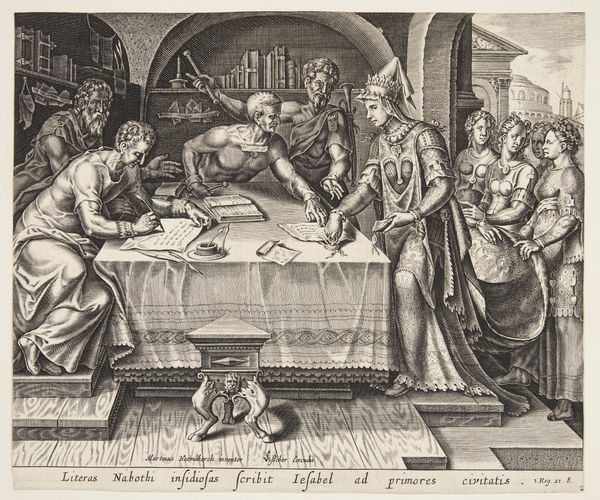
painting, oil-paint
#
baroque
#
painting
#
oil-paint
#
oil painting
#
genre-painting
Dimensions: height 156 cm, width 207 cm, depth 11 cm, weight 37 kg
Copyright: Rijks Museum: Open Domain
Curator: Upon first glance, this market scene strikes me with a palpable sense of commerce, yet also feels strangely formal. It’s like a carefully constructed still life with figures. Editor: You're right. Formality does seem to seep through. This is "Fishmongers" by Jacob van Nieulandt, created around 1617. It’s an oil painting showcasing a bustling fish market. Now, how do you connect with it on a deeper, intersectional level? Curator: The most apparent detail is the blatant contrast between the fish seller's masculine figure against that of the richly dressed woman and her male escort in somber garments. I see a commentary on social hierarchy and gendered roles being performed through the mundane act of buying and selling fish. Her clothes speak volumes of class privilege and restriction. Editor: Absolutely. The presence of such individuals elevates a scene that could have been ordinary into something more charged. Think about the function of genre paintings in the 17th century: capturing everyday life to reflect on societal norms and structures. This painting isn't simply documentation, but subtly political. Curator: And look at how the fresh fish is arranged, presented almost as trophies! I’d argue there’s a visual echo between how these beings from the ocean are objectified and displayed, and the objectification of the labor of the vendor at the bottom of the social ladder. Editor: I appreciate you noting how both person and object were used within social frameworks. Did you observe anything significant about the background? There's something intriguing about its appearance in comparison to the foreground. Curator: The soft, almost hazy city skyline contrasting sharply with the detailed depiction of fish, perhaps to amplify the transience of this interaction. Editor: And perhaps hint to where the laboring class source their food. So much food ends up being an extension of commerce, a demonstration of political dynamics on an ever changing landscape of exchange. Food systems aren't outside of politics. Thank you for the illumination! Curator: Indeed. It is eye-opening how such a mundane snapshot of early 17th century society gives light to timeless notions of identity, class, and ecological exploitation.
Comments
No comments
Be the first to comment and join the conversation on the ultimate creative platform.
